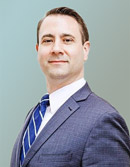Below you will find a real life case study of a couple who is looking for financial advice on how best to arrange their financial affairs. Their names and details have been changed to protect their identity. The Globe and Mail often seeks the advice of our VP, Wealth Advisor & Portfolio Manager, Matthew Ardrey, to review and analyze the situation and then provide his solutions to the participants.
![]()
Written by:
Special to The Globe and Mail
Published December 8, 2023

When she was still working, Margaret earned just shy of $90,000 a year. Norman, who works in publishing, earns $92,000 a year including bonus plus another $5,000 a year in royalty income.
Margaret retired last spring and Norman is keen to follow. She is 65, he is 62. They have two children, both in their early 30s. The younger one is living at home and saving for a down payment. They have a mortgage-free condo in a comfortable Toronto suburb and no debt.
When she was still working, Margaret earned just shy of $90,000 a year. Norman, who works in publishing, earns $92,000 a year including bonus plus another $5,000 a year in royalty income.
“We are wondering when Norman can retire or move to part-time hours,” Margaret writes.
Although neither has a defined benefit pension plan, Norman’s employer contributes to his deferred profit-sharing plan (DPSP) and non-registered investment account. (A DPSP is a type of employer-sponsored retirement savings plan.) They both have RRSPs.
In the short term, Norman and Margaret plan to upgrade their home and do some travelling. They wonder when they should start collecting government benefits and when to convert their RRSPs to registered retirement income funds and begin withdrawing. They ask, too, if they can afford to help their children with a down payment on a first home, and if their investments are appropriate.
Their retirement spending goal is $77,000 a year after tax.
We asked Matthew Ardrey, a portfolio manager and certified financial planner (CFP) at TriDelta Private Wealth in Toronto, to look at Norman and Margaret’s situation. Mr. Ardrey also holds advanced registered financial planner (RFP) and the chartered investment manager (CIM) designations.
What the Expert Says
Margaret retired in May and Norman is planning to semi-retire now and fully retire in 2024, Mr. Ardrey says. “Before they make their final decision, they want to make sure that they have a plan in place that looks after all of their retirement goals,” the planner says.
Margaret is taking about $3,627 per month from her RRSP to cover her living expenses. “Although she is 65, she is unsure whether to take her Canada Pension Plan and Old Age Security benefits now,” Mr. Ardrey says.
Norman is earning $92,000 a year plus $5,000 in royalties. When he semi-retires, his employment income will drop to 60 per cent of its current amount.
Norman and Margaret are saving $3,000 each per year to their tax-free savings accounts. Norman is also saving $5,000 a year to his RRSP, $4,350 to his deferred profit-sharing plan with a $3,480 employer match, and $6,960 to his non-registered account with a $3,480 employer match.
In his forecast, the planner assumes the savings cease when Norman retires. He also assumes Margaret receives an inheritance of $200,000 five years from now, as expected, from an elderly parent. These funds will be used to top up the couple’s tax-free savings accounts.
Norman and Margaret asked whether they should defer their CPP and OAS benefits, Mr. Ardrey says. “Unless there is a risk to their longevity, it makes sense for them to defer these pensions,” the planner says. Deferred to age 70, CPP benefits would increase by 42 per cent and OAS by 36 per cent. These higher benefits will help mitigate the risk of outliving their savings and also allow them to withdraw from their RRSPs in low-tax years. “With almost 80 per cent of their assets in RRSPs, this will help lower their tax bills over time,” Mr. Ardrey says. Larger RRSPs would push them into a higher tax bracket later when they begin making mandatory withdrawals at age 72.
In retirement they plan to spend $77,000 per year, close to their current level of spending. Additionally, they would like to have a $10,000 annual travel budget for 10 years, then falling to $5,000 per year for the remainder of their lives so they can continue to visit their daughter in Alberta. Planned one-time expenses include $15,000 for renovations in 2024 and $40,000 for a car in 10 years.
Self-described conservative investors, Margaret and Norman’s asset mix is 5 per cent in cash, 30 per cent in guaranteed investment certificates, 20 per cent in fixed income and 45 per cent in stocks. The stocks and bonds are invested in exchange-traded funds. “This portfolio has a projected return of 4.55 per cent” a year, Mr. Ardrey says. That’s based on historical performance.
For the forecast, the planner assumes a life expectancy of age 95 and a long-term inflation rate of 3 per cent.
“Based on these assumptions, they would run out of money in the final two years of the plan,” Mr. Ardrey says. They could easily cover the deficit by selling or downsizing their home. That assumes consistent investment returns.
“But life and investments rarely ever move in a straight line,” the planner says. Stocks and bonds go up and down. “To ensure the viability of this plan, we stress-tested it using a Monte Carlo simulation,” he says. The program introduces randomness to a number of factors, including investment returns.
For a plan to be considered “likely to succeed” by the program, it must have at least a 90-per-cent success rate, meaning at least 900 trials out of 1,000 succeed. If it is below 60 per cent, then it is considered “unlikely to succeed” and in between, “somewhat likely.”
Based on the assumptions in the initial projection, the probability of success is only 41 per cent, or clearly in the unlikely zone, Mr. Ardrey says. This is not surprising given that the projection failed in the final two years under the straight-line projection, he adds.
“There is no magic wand to correct a retirement plan. Changes must be made to one of the following factors: retirement date, savings, retirement spending and/or investment returns.”
If Norman put off retiring for four years and they cut their retirement spending by 5 per cent, the Monte Carlo simulation would move up to a healthy 89-per-cent success rate, he says. Combined with a sale or downsizing of the home, it would move to 100 per cent. “Although this removes the risk from the retirement plan, it certainly is not a preferrable option for Margaret and Norman.”
Next, he looks at their investment portfolio. They should consider boosting their potential investment returns by increasing their allocation to stocks or stock funds, he says. “They have a 30-plus year time horizon so equities are needed to outpace inflation.” While GICs are paying a solid 5 per cent today, there is no guarantee that this will continue.
“We would suggest that they engage the services of a portfolio manager with a focus on income generation,” Mr. Ardrey says. “There are many solid investment options that are yielding 6 per cent or more in stocks, bonds and other strategies. Having an expert work with them is important because they must balance their need for returns with their tolerance for risk.”
With a rate of return of 6 per cent a year, the Monte Carlo simulation predicts a 100-per-cent retirement success without having them reduce their spending, work longer or sell their home, the planner says. They are not in a position to help their children with a down payment without jeopardizing their own financial security.
Client Situation
The People: Margaret, 65, Norman, 62, and their two adult children.
The Problem: Can Norman afford to retire soon without risking their lifestyle spending goals? When should they take government benefits? Can they help their kids financially?
The Plan: They might be able to meet their spending goal, but they would have to sell or downsize their home in the final two years. If their investments disappoint, the plan could fail. To improve the likelihood of success, Norman could work longer, or they could add more equities to their portfolio in hopes of boosting returns.
The Payoff: A better understanding of where they stand financially.
Monthly net income: $6,260.
Assets: Cash $15,600; employee share purchase plan $19,175; her TFSA $92,275; his TFSA $91,705; her RRSP $379,600; his RRSP $345,375; his DPSP $8,070; residence $775,000. Total: $1.7-million.
Monthly outlays: Condo fees $460; property tax $220; water, sewer, garbage $20; home insurance $100; electricity $105; heating $100; maintenance, security $80; garden $30; transportation $835; groceries $1,465 (son contributes); clothing $210; gifts $165; charity $400; vacation, travel $665; dining, drinks, entertainment $650; sports, hobbies $90; subscriptions $65; health care, life insurance $310; phones, TV, internet $315; RRSP contributions $780; TFSAs $500; share purchase plan $580. Total: $8,145.
Liabilities: None.
Want a free financial facelift? E-mail finfacelift@gmail.com.
Some details may be changed to protect the privacy of the persons profiled.

Matthew Ardrey
Portfolio Manager & Senior Financial Planner
matt@tridelta.ca
(416) 733-3292 x230
